IPM - International Perforation Management
hi-tech engineering - Germany -
Thailand - China
phone/fax: 0049-3212-5375175
http://www.microperforation.com
http://www.deguodaguan.com/ipm/
grosse microperforation.com - perforationpeople web.de
copyright Werner Grosse
patent download http://www.microperforation.com/englishengineerreport.html
main link http://www.microperforation.com/ipm-technology.html
IPM PORTFOLIO ENGLISH
download Patent Text
Outstanding Micro Cluster Production
Technologies
MLL-1 anti
piracy micro laser treatment line perforation real alternative for galvanometer or scanner,
super-high speed rotate cone mirror, cluster micro technology for holes
pattern, perforation design, waves, zigzag or packages lines, cryptograms,
company logos, holograms, anti piracy, counterfeiting, security paper, safety,
bank note, metal sticker, printing, laminating, coating, fruit, food, bread,
vegetable, agriculture covering, credit cards, transparent film, holographic
paper, cigarette, tipping, filter, aluminum foil, shrinkable film, tear tape,
cardboard, matrix code, identification, RFID, tag, marking, scribing, jewelry,
automotive, pharmacy, golf, marina, tobacco, smoking, chemical, medical,
product, electronics part, indicator, porosity contours or profile, embossing,
bioengineering, membrane, filtration, focus, holographic, hinge-lid, pack.
Patent pending DE102004012081.
LPM-1 micro
laser cluster perforator, material treatment at wide web, large
area, surface or entire material cluster treatment, cutting, welding, drilling,
ablation, cleaning, melding, high power, ultra high speed rotate quad or twin
laser beam splitter, twin level vacuum multiplexer, up to 4 Kilowatt laser
input, flexible hollow fibers, HGW, HCW, up to 200 output channels, Co2. Material
treatment and robotic handling for stainless steel, ceramic, aluminum, wafer,
gold, glass, silver, brass, copper, wafer, silicon, titanium, silicon, solar,
panel, photovoltaic, micromachining, slitting, rewinding, refining machines or
stand along systems. Micro cluster perforation for all kind of paper or
specific plastic web material. Patent granted DE102004001327.
Nano
Micro perforation or other material surface treatment electrostatic cluster perforation, micro perforator, for cigarette,
tipping, filter, packaging, plug wrap, Kraft, cement, pet, powder, sack, bag,
fine and other paper, silicon or other coating, certain plastic film, laminate,
porosity from 80 up to 2,500 C.U., from 50 down to 4 Gurley, hole sizes from 50
nm up to 100 micron, hole densities from 80-260 h/cm2, zone widths from
2.0-6.0mm, up to 16,000,000 holes per Second, web speeds up to 600 m/min, web
widths up to 2,000 mm. Patent granted DE10328937.
Twin AC/AC,
AC/DC frequency shift converter high power high frequency, high voltage, ultra short mega peak current,
electrostatic micro cluster perforation, ignition, sparking, arc, cigarette,
tipping, filter, fine, packaging, paper, plug-wrap, sack, bag, Kraft, food,
plastic film, foil, textile, fabrics or other product, switching converter,
compressor, emergency, train, ship or vessel power supply, generator, fuel
cell, upward, downward, frequency shift switching unit, stabilizer, soft
starter, vector, phase, inverter, servo system, motion, stepping, machine,
asynchronous, standard, motor, torque, automation, remote, gas, slab, laser,
diode, stack, fiber, fibre optics, beam, material,
hybrid, plug-in, battery, renewable, energy, medical equipment, membrane,
filtration, robotic, photovoltaic, industrial automation, drives, IGBT, MOSFET,
FRETFET, HVFET, tube, rf, hv.
Patent granted DE10328937.
Online OPSS-1
porosity vision scanning control system permeability cluster control for electro static or laser micro
perforation machines, multiple color sensor head, spectral intensity, DSP,
FPGA, CCD, line, precise, laser, position, material finger print detection, VIS
wave length, opacity, defects, inspection, image control, scanner systems,
process software, line, camera, vision control, filter, tipping, cigarette,
book, packaging, magazine, bible, wall, Kraft, paper, coffee, tea, food,
co-extrusion foil, film, agriculture, cement, domestic or other moving fabrics
or web material. Patent pending DE10251610, China patent grant 200310104764.
In-situ dyne or
surface tension control ODSTM-1 at fast moving
substrate, plastic, film, foil, tear tape, laminate, co-extrusion, BOPP, LLDPE,
LDPE, PE, PP, PVC, MOV, MOH, FEP, PET, OPP, PTFE, MPET, spectral, extinction,
monolithic, sensor, analyzing, Subangstrom,
roughness, measurement, wavelength, wobbling, stray, light, beaming, water
drop, angle, inspection, corona, plasma jet, laser, IR, NIR, scanning,
monolithic spectrometer, photonics, spectral, properties, reflectometer,
scatterometry, ellipsometry,
opto, acoustic, basic, weight, techniques, corona,
flam, gas treatment. Prior patent
application DE19543289.
Patent references
http://www.wikipatents.com/gb/2149092.html
http://www.wikipatents.com/de/3332886.html
http://www.wikipatents.com/de/2918283.html
http://www.freepatentsonline.com/EP0460369.html
http://www.freepatentsonline.com/7224447.html
http://v3.espacenet.com/publicationDetails/biblio?CC=EP&NR=0460369&KC=&FT=E
http://www.inpama.com/index.php?content=invention&id=18
http://www.inpama.com/index.php?content=invention&id=19
http://www.inpama.com/index.php?content=invention&id=20
http://www.inpama.com/index.php?content=invention&id=21
http://www.inpama.com/index.php?content=invention&id=22
http://www.inpama.com/index.php?content=invention&id=23
http://www.inpama.com/index.php?content=invention&id=24
https://www.patent-net.de/index.php?content=projekt&id=163
https://www.patent-net.de/index.php?content=projekt&id=213
https://www.patent-net.de/index.php?content=projekt&id=155
https://www.patent-net.de/index.php?content=projekt&id=156
https://www.patent-net.de/index.php?content=projekt&id=214
https://www.patent-net.de/index.php?content=projekt&id=157
https://www.patent-net.de/index.php?content=projekt&id=158
https://www.patent-net.de/index.php?content=projekt&id=287
PowerSourcing Links
Micro cluster perforation - archipelagos of
technical possibilities
porosity vision and dyne surface tension
control at fast moving material webs





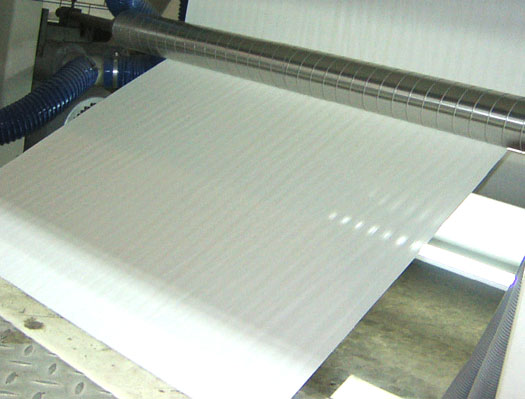
PS-1200 wide web micro
cluster perforation machine - download PS-1200
Micro cluster technologies - incredible
applications
Web material as regenerated
cellulose films, filter, cigarette, tipping, roll-your-own RYO paper,
transparent, coated special, bag or packing papers, bonded fabrics, spun bonded
non-woven, technical textiles, fabrics, laminate with base weights from 20 g/m2
to up to 150 g/m2, up to 20 g/m2 LPDE coating films, are perforated electro statically
micro, or by laser (mechanical hot or micro needle) with micro or macro holes
for wide range of application purposes.
Electrostatic MICRO PERFORATION,
based at micro discharging and sparking, Bluemlein
and Plasma Tunnel effects with gas atomic ionization in Nanosecond time
windows.
The pores are statistically
irregularly distributed with size ranges from 100 nm up to 80 μm diameter and analogically, under LASER or micro macro PERFORATION,
arranged in diameter sizes from 60 up 200 μm, at best non-inclined holes und rows of holes of diverse arrangement
comprehension.
For the human eye invisible
electrostatic micro perforations may be arranged in areas as well as in zones
with specific distances within its web. Controlled pore sizes in wide ranges
from 100 nm to 80 µm diameters by holes sequences up to 16 million pores per
second and 0.1 bis 3 mJ
discharge energy for each Pore.


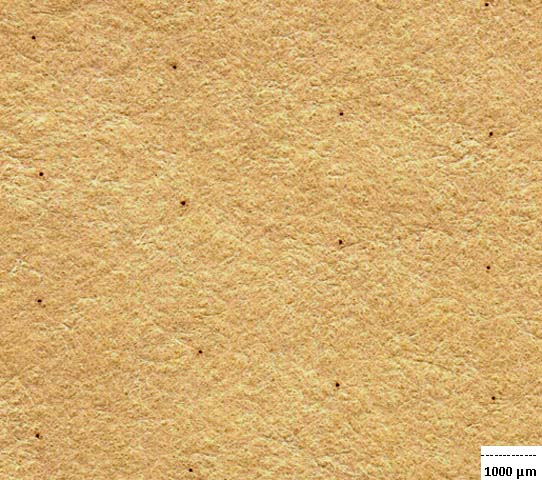

Arrangements of zones are usually
carried out in width from 2 to 6 mm and pore density of 15 up to 250 pores per
cm2 whereas the perforation of areas results in pore densities of up to 5
million pores per m2. ESP perforations allow porosity levels from 80 to 2500 C.U.,
web widths from 100 to 2000 mm at web speeds of up to 500 m/min, depending on
porosity and material consistency in relation to its ability to perforate.


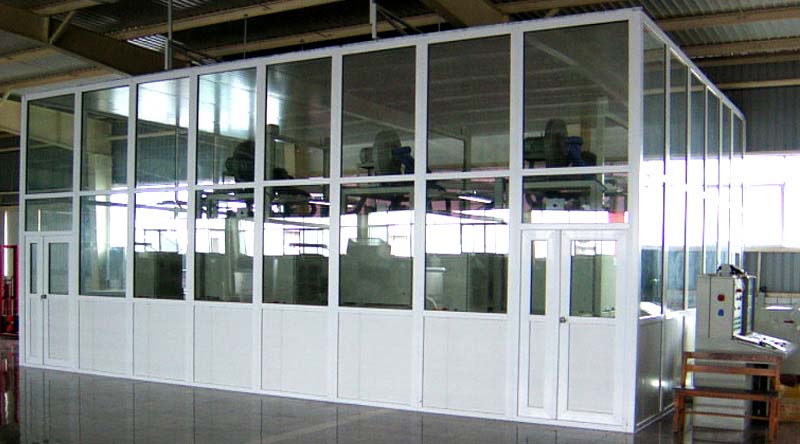


Conventional laser perforation
Possible to perforate by pulsed
and focused laser beams are holes sizes from 60 to 200 micron at density of
holes of typical 10 to 30 holes per cm length, holes sequences up to 400,000
holes per second at a maximum of 32 hole rows by laser distributed over the
width of the web with traditional systems or machines on the market.
Porosity levels from 100 up to
3,000 C. U. by web width up to 500 mm at web speeds of up to 600 m/min are
archive able, depending on porosity and material consistency in relation to its
ability to perforate.
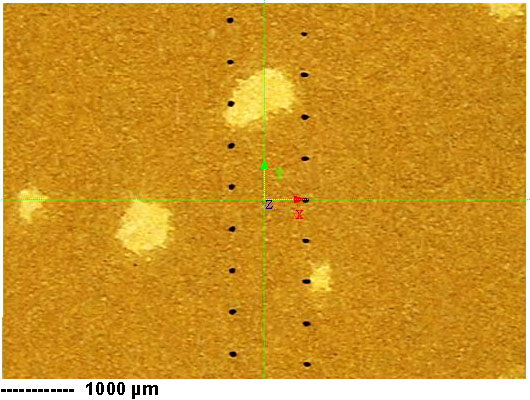


IPM laser perforation process
IPM owns development of LASER
PERFORATION technology LPM-1, patent grant DE102004001327, operates with quad
laser beam inputs of 8 Kilowatt optical power input (fast flow or SLAB laser
with 10.6 micron wavelength) to an upper lower dual beam multiplexer to
generate up to 200 individual laser perforation beams/rows/lines across the
web, combines automatic laser perforation head positioning, focus setting, by
web speeds up to 400 m/min, web width up to 2,000 mm, up to 4,000,000 holes per
second. Each laser perforation lines are archive able from 100 up to 2,000 C.U.
Jumbo-roll-by-roll production,
optical online porovision and simultaneous
perforation line positioning control, full feed-back system for constant
porosity levels are further features. Each laser perforated jumbo roll is ISO
production data controlled, benefit and certificated.
http://www.microperforation.com/lpm-1.html
Patent grand DE102004001327

Other industry areas
The conception of high power twin laser beam
multiplexers enable many possibilities in other industry application fields as
cutting, cut-offs, welding, surface finishing, drilling, polishing, forming,
surface treatment, roughness improvement.
Each of the 200
single perforation head can be positioned in X directions across the running
web or other laser treated material sheet, substrates, blocks etc.
The automatic
processes, equipments and devises opening completely new possibilities in
industry, science, military or space laser application. Patent
grant of process and device with DE102004001327.
Further laser features
A patent pending Micro Laser Line
perforation technology MLL-1 generates sinus, waves, zigzags or other kinds of
perforations cryptograms, designs as multiple or quadruple pairs of micro laser
lines in web direction. Hole, slot or star sizes in ranges from 60 up to 200
micron are possible. Provide for tipping, cigarette, packaging or other kind of
paper, plastic film or other web material.
Special features of
micro laser line perforation enables fundamental new product characteristic in
scripts, e.g. for mouthpieces with tipping paper, CTP on cigarette filters,
product indication with visible perforation holes, brand name, company logo,
indications, anti counterfeiting designs, cryptogram, etc.
In addition for
other industry, medical, science or military purposes, material and
applications fields.




http://www.microperforation.com/mll-1-laser-perforation.html
Patent DE102004012081
Ventilation of mass products
Electrostatic perforation has
been used since 30 years for ventilation of non filter, RYO or filter
cigarettes to create a directed and guided air bypass or Lindstroem
principle. For this purpose, cigarette paper for some non filter or RYO
cigarettes and almost every kind of filter cigarettes tipping papers are
perforated electro statically OFFLINE in zones from 2.0 up to 6.0mm width or in
rows with ONLINE or OFFLINE by use of slow, fast flow, sealed-off or SLAB CO2
gas or diode laser in order to reduce the harmful substances such as nicotine
and condensate down to allowed values. Another effect is the possibility to
control the degree of ventilation of Cigarettes.


Online micro perforation porosity profile
Many years ago IPM had developed
a multiple online electrostatic micro perforation OESP-1 units at cigarette
making machines which was patent applied with EP0460369 and DE4018209.
That electrostatic micro
perforation process enables cigarette or tipping paper while cigarette making
processes to reduce nicotine and condensate levels for non-filter and filter
cigarettes as well.
The OESP-1 devices opens fully
new possibilities for cigarette or tipping paper ventilation during cigarette
manufacturing by entire perforation cassettes integration into cigarette making
machines as Max-S, Protos 80, 90, MK9 etc.
http://www.freepatentsonline.com/EP0460369.html
The method and the device for
electro erosive perforation of cigarette paper basically operates with at least
two pairs of electrodes which are ignited at the same time in such a manner
that each perforation section is treated twice in order to provide a
corresponding intensity of perforation, taking into consideration the duration
of ignition and the web speed. In particular, the invention operates with at
least four pairs of electrodes, between which the web of cigarette paper to be
perforated is moved through.
The cigarette paper is moved in
the longitudinal direction of the cigarette to be produced later, the width
corresponding to the circumference of the cigarette plus an overlap section for
bonding. Perforating is carried out transversely to the direction of movement,
that is to say an accurately defined zone section is produced around the
circumference of the cigarette.
The pairs of electrodes are
arranged at a distance which corresponds to half the cigarette length (a, b, c)
when four pairs of electrodes are used. The first and the third pair of
electrodes are ignited simultaneously. A distance-dependent control causes the
second and fourth pair of electrodes also to be ignited simultaneously when the
previously perforated sections have traveled the distance of half a cigarette
length.
Each section is perforated four
times, the speed at which the web can be moved being determined not by the
spacing (half a cigarette length) of the pairs of electrodes but by the spacing
of the pairs of electrodes in each case simultaneously ignited (one cigarette
length).
This provides for uniform,
intensive and very powerful perforation and the cigarette paper treated can be
continuously supplied to the cigarette machine for further processing in the
longitudinal direction of the cigarette.
Advantages manufacturing
Small all-over-dimensions, direct
mechanical integration of perforation units, easy functional interfacing and
full EMI acceptance in order of EN or NEC standards archiving high production
efficiencies with controllable ventilation grades on highly automated cigarette
making machines.
Patented, powerful, dual
switching, high frequency switching electronics and multiple perforation
performances of the circumference of each cigarette, allows problem less
perforation on high-speed cigarette making machines up to 12,000 cpm.
- Porosity ranges from 50 up to 400 C.U.
- pore densities from 25 up to 300 pores/cm2
- hole size from 30 up to 80 micron
- cigarette ventilation grades up to 45 % are
archive able.
- All necessary perforation, production parameters
are stored and controlled by microcomputer operation, i.e. geometrical and
synchronized positions of perforation lines, zones etc., pore density,
perforation zones width and distributions, perforation profile and
porosity ranges for each cigarette brand.
- Porosity profiles over the length
of each non-filter cigarettes are possible.
- Furthermore single, multiple, different or equal
groups of single perforation zones around the circumference of each
cigarette for non-filter, RYO even tipping paper for filter cigarettes are
possible.
- All stored parameter sets are linked to the PLC
system.
- Different micro perforation designs and porosities
of each cigarette brand are flexible to define and controllable during all
production processes.
- Air ventilation levels are exactly defined and,
due to online feedback, can be kept constant by means of perforation
system design and porosity distribution.
- For non filter cigarettes for example,
perforation can be effected over the entire length and circumference of
the cigarette.
Liability and system investment
The ESP process OESP-1 has a high
liability and is realizable with low investments and low running costs when
compared with on-line macro or micro laser perforation processes. An online
porosity control system OPSS-1 monitor continuously the air permeability,
called optical online porovision or porosimeter, with a state-of-the-art technology to obtain a
close-loop feed-back to the perforation unit to keep ventilation grades
constant.
IPM - ONLINE LASER PERFORATION with patent
granted high speed multiplexer DE102004001327
A – laser source and IPM patent grand
multiplexer with 8 optical channels
- by 8 laser lines, 10.6 micron, CO2, sealed off
laser, M2<0.9, e.g. Coherent ULR-300, 300W Synrad,
PRC
- by 4 laser lines, 10.6 micron, CO2, sealed off
laser, M2<0.9, e.g. Coherent ULR-150, 200W Synrad,
PRC
- laser source dimensions all over approx:
1,100*200*200 mm, water cooled
- output 45 grad divert mirror
- IPM multiple laser beam multiplexer
- centre rotate twin beam splitter and high speed
motor (not shown) up to 900 rpm/sec.
- diameter approx. 400 mm, high approx. 200 mm
- 8 optical output channels, coupled special hollow
fibres, each in lengths 1,000-3,000 mm
B – bobbin unwinder
and perforation heads
- tipping paper from 48 up 64 mm web width
- 8 perforation heads, 4 on each side
- each laser beam supply with special hollow fibres
and auto focus devices
- diameter of each focus device around 25 mm,
distances in web direction around 50mm
- length of necessary perforation section approx.
200mm by 8 laser lines
- necessary width of perforation section - tipping
paper width + 40mm on both sides
C – tipping paper strips with 8 laser
perforation lines
- up to 10,000 cpm or 135
m/min tipping paper web speed
- 4 laser perforation lines on each side
- total round or oval hole sizes between 60-180
micron diameter
- up to 8 holes/cm, one hole with e.g. 14 C.U.
- 8 h/cm*14 C.U./h*4*2cm (Coresta)
= in total around 900 C.U.
- ventilation grad 10-80 % with twin or quad rows
- by 8h/cm*8 holes/rows*135 m/min = 14,440 holes/s
in total
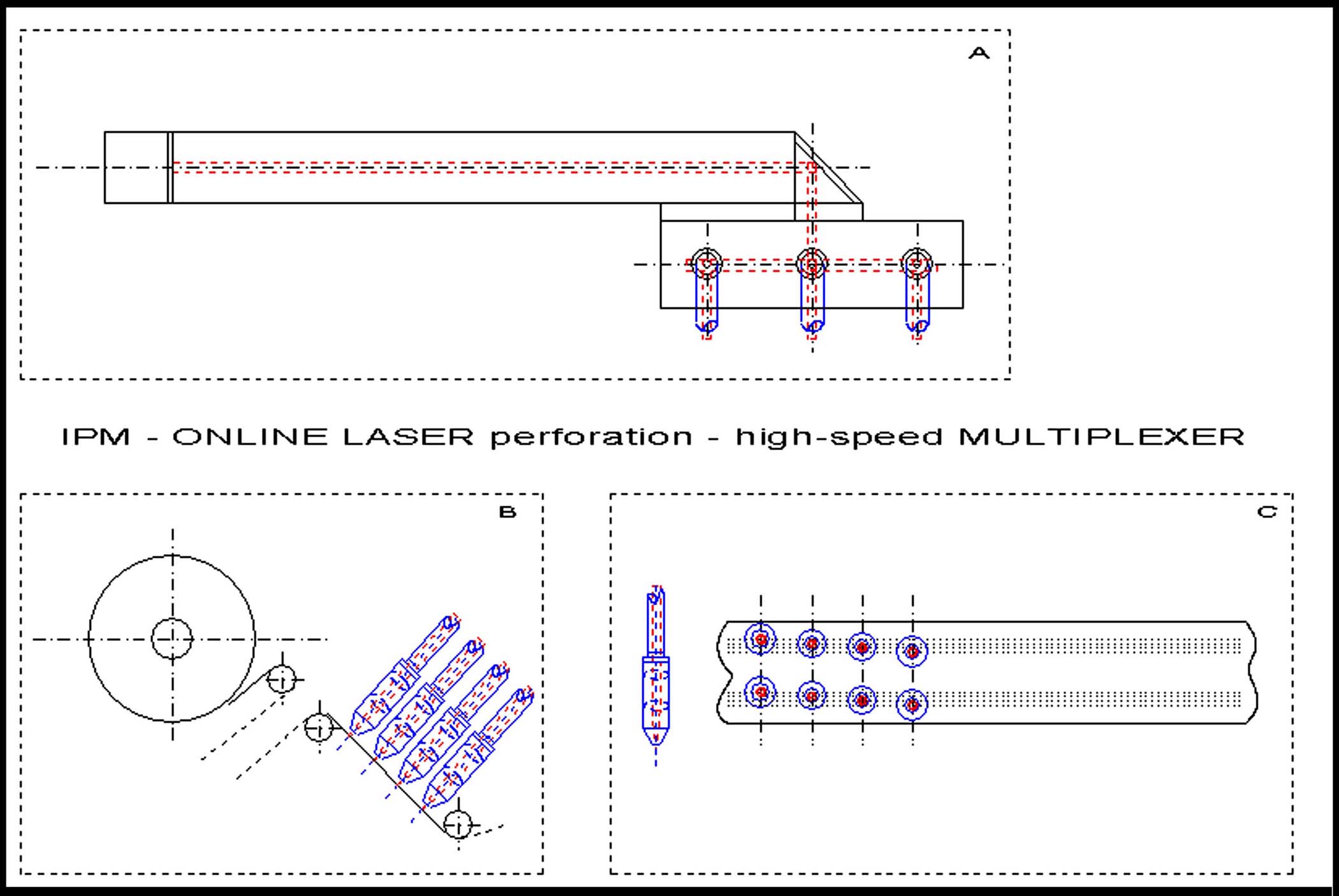
further information on request
Conclusion: Online
micro perforation processes are possible to use for other mass products and
application fields with full system integration in entire production lines as
bag, sack, packaging manufacturing etc.

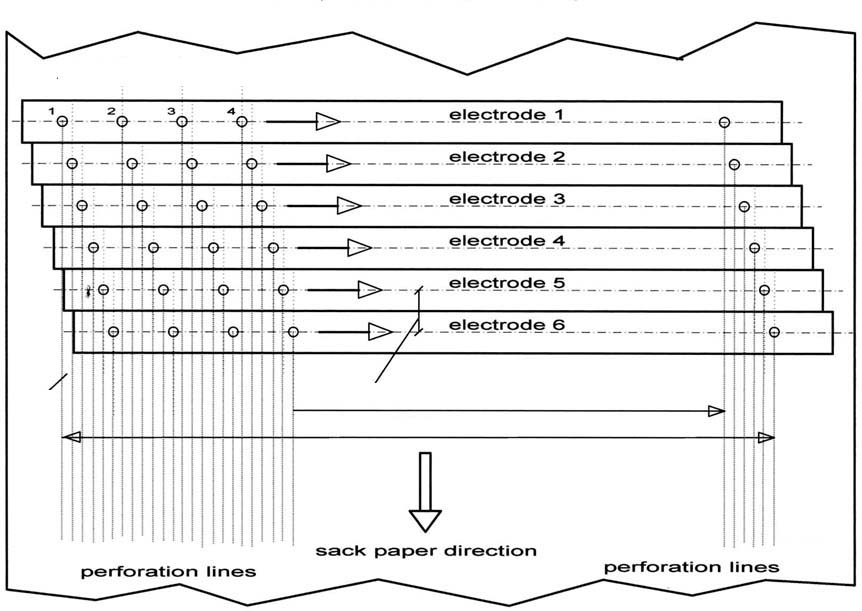
Product properties with electrostatic
perforation
One of the foremost postulation
which can be applied to many application purposes and products containing
bonded fabrics, bag or packaging papers, non-woven, etc. with gas or steam
permeability but water impermeability.
Further substrates or micro
engineered membranes for micro filtration, fractionation, nanopattering,
nanomembranes, nanophotonics,
microbiology, catalysis, gas, alcohol, liquid or blood separation, battery
separator foils or others are possible with ELECTROSTATIC NANO MICRO
PERFORATION TECHNOLOGY, depends of material structures and perforability.


Which means pore sizes from 10 nm
up to 10 µm diameter by up to 5 Million pores per m2. This is due to the
water’s greater surface tension as dynes level and hydrophobic property or wetability through the relatively small sizes of nano or micro pores. These and other advantages of the
pores necessarily demand the application of the ESP perforation method because
alternative perforation or processes are physically NOT feasible, too expensive
or simply uneconomical and would not allow successful product applications.
To archive new nano or micro perforation demands IPM developed power
electronics perforation units which working as upward converters with IGBT,
BJT, MOSFETS, FRETFET or HVFET for ultra short power pulses from 10 ns up to 20
µs, high current peaks up to 300 Amps, base frequencies up to 200 KHz on
plug-in ferrite transformers to generate 50 Kilovolt to each sparking
electrode. Patent grant DE10328937 for power electronics.
http://www.microperforation.com/igbt-esp-unit.html
Patent DE10328937
Optical online OPSS-1 porosity permeability
sensor scanner system for high speed material webs
Patent pending
DE102516103 DE10251610
China patent grant
200310104764
Sophisticated, multi functional, optical online sensor systems
IPM has developed a number of new, patent pending, stationary, scanning
optical control processes, devices and systems for fast moving webs or fabrics
to detect very precise and reproduce their specified product properties in
online operation during production.
Introduction
OPSS-1 OPRL-1 vision control systems are equipped with multiple IR, NIR,
VIS monolithic spectral color sensors, precision line lasers, CCD imagine devices,
DSP, ATMEL and INFINEON sensor internal controllers, own firmware, high speed
data link, at scanning speeds from 20 up to 500mm per second, at web widths up
to 5,000 mm, measuring gaps from 2.0 up to 5.0mm, optical inline detection of
permeability, porosity, spectral transmission, opacity, extinction, particle
absorption, porosities ranges from 80 up to 5,000 C.U. (Coresta),
respective from 50 down to 3 Gurley, position control of micro perforation lines
with 0.1 mm accuracy, micro pores from 50 nm up to 200 micron diameter by up to
300 pores per cm2. With real time data determining of certain parameters,
optical transmission, spectral grades, porosity integrals, envelope curves,
internal calculated measuring values.
Thus direct with close loops and feedbacks to the power electronics of
fabrics treatment units. Micro perforation or other system makes it possible to
compensate any changes in web treatment parameters and their partial locations
so that each jumbo roll as well single, quad bobbin sets can be produced
quantity and quality controlled without intermediate stops in order of ISO
9001/9002 certifications.
Thus sophisticate, precise, liable, repeat accuracy, easy visualized,
optical online measurement techniques archives perfect ways to control and
convert pneumatic, fluid, gas, jet streams, static permeability, naturally
porous grades, filtration levels, breathable or ventilation effects, etc. at
fast moving webs. Their conditions can be easily met by using optical
transmission technology thanks to described processing in fully online
stationary or scanning control units, extremely small pore dimensions, high
fabric speeds up to 1,000 m/min by high repetition rates. That completely
independent from base material properties as consistency, coloring, density,
formation, pin holes, smoothness, stretching, shrinking, brightness, opacity,
optical spectral property, gauging thickness weight, moisture content and other
known influences.
Applications
The electrostatic micro perforation, including Co2
slab fiber yag excimer
diode laser, other material going trough or surface treatment, as well for
micromachining and nanotechnology, is usually used depending on quality at
fine, rotogravure or offset printing, holographic or publishing paper, writing,
magazine, newspaper, packaging, bonded fabrics, non-woven, filter, coffee, tea,
bag, sack, craft, food, fresh fruit, force, reinforce, tipping, cigarette, plug
wrap, fiber, facial tissues, toilet, decoration, wallpaper, gift, watermark,
towels, bleached dyes shiny or clay, recycling, booklet, bible or other special
paper, certain plastic films, foils, coating, laminating, extruding, Polyofine, Polysulfone, Elastomer,
textile, Polymer or most of that varied types.
It is also used especially for additionally treating materials when
aiming special characteristics by physical or regular process reasons cannot be
achieved by other process technologies. Material base weights from 10 up 150
grams per m2 by thickness from 5 up to 100 micron are possible to use.
Including defect inspection, process automation, moisture vapor transmission
rate, abrasion resistance for lamination of waterproof and breathable fabrics.
Our state-of-the-art,
industrially approved, sophisticated, compact, multi functional, optical online
sensor scanning systems together or without electrostatic, laser perforation
technology operates precise and reliable 24/7, are integrate able into existing
rewinding, slitting, spooling, spreading, printing, labeling, complex
production lines or other machines and other production processes as well.
Also, they can be used as completely independent micro surface-all-over or zone
perforation units.
Fully new ranges of applications
will be made available total new products with special features.
Specific
information by below website links and patent resources.

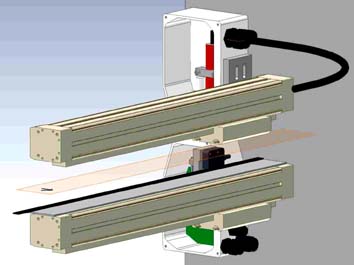
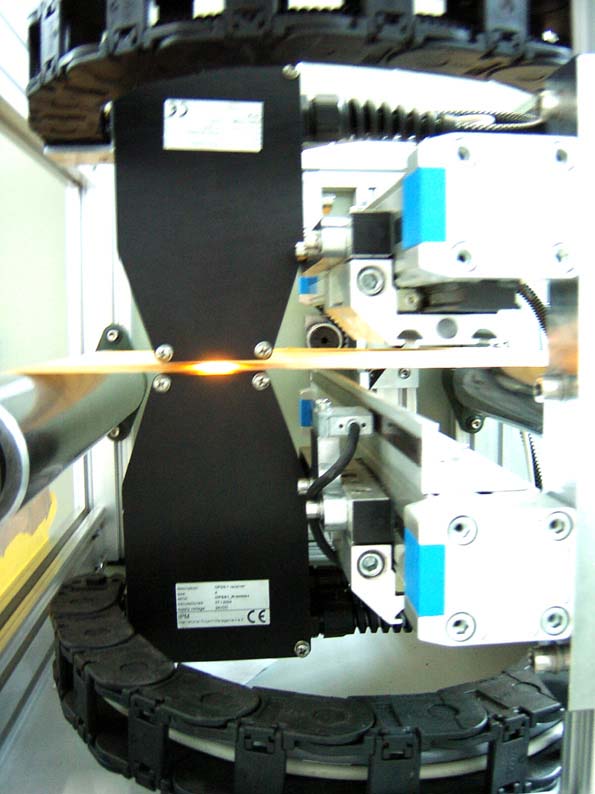





OPSS-1 inline porosity
vision control - download OPSS-1
OPSS-1-B print inspection with hi-speed
camera scanner on QUAD bobbins at laser perforators
Print inspection – tipping paper – quad bobbins
Patent applied in Germany
and P.R. of China
Sophisticated multi
functional permeability sensor systems
Patent
pending DE10251610 and patent granted in China 200310104764. Stationary or
scanner systems for speed fabrics or sheet material to detects very precise and
reproduce specified product properties, natural or micro perforated porosity
levels during production. OPSS-1 OPRL-1 vision control systems are equipped
with multiple IR, NIR, VIS monolithic spectral color sensors, precision line
lasers, CCD image devices, DSP, ATMEL, INFINEON sensor internal controller,
firmware, fast serial data link, scanning speeds 20-500 mm per second, web
widths up to 5,000 mm, measuring gaps from 2.0-5.0 mm, optical inline detection
of permeability, porosity, spectral transmission, opacity, extinction, particle
absorption, porosities ranges 80-5,000 C.U. respective from 50 down to 3
Gurley, position control of micro perforation lines with 0.1mm accuracy, 0.50-200
microns pore diameter by up to 300 pores per cm2.
With real
time data determining of certain parameters, optical transmission, spectral
grades, porosity integrals, envelope curves, internal calculated measuring
values. Thus direct with close loops and feedback to power electronics of
fabrics treatment units. Micro perforation or other treatment system makes it
possible to compensate any changes in web treatment parameters and their
partial locations so that each jumbo roll as well single, twin or quad bobbin
sets can be produced quantity and quality controlled without intermediate stops
in order of ISO9001/9002 certifications.
Working
principle and application
Thus sophisticate,
precise, liable, repeat accuracy, easy visualized, optical online measurement
techniques archives perfect ways to control and convert pneumatic, fluid, gas,
jet streams, static permeability, naturally porous grades, filtration levels,
breathable or ventilation effects. Their conditions can be easily met by using
optical transmission technology thanks to described processing in full online
stationary or scanning control units, extremely small pore dimensions, high
fabric speeds up to 1,000 meters per minute by high repetition rates. That
completely independent from base material properties as consistency, coloring,
density, formation, pin holes, smoothness, stretching, shrinking, brightness,
opacity, spectral property, gauging thickness weight, moisture content, other
known influences.
Optical online
OPSS-1 porosity sensor scanning systems for permeability cluster control at
electrostatic or laser micro perforation machines, with multiple color sensor
head, spectral intensity, DSP, FPGA, CCD, precise line laser, position,
material finger print detection, VIS wavelength, touch less measure of opacity,
defects, inspection, combines controller internal firm and further PC process
software.
Uses for
filter, tipping, cigarette, booklet, packaging, magazine, newspaper, media,
bible, wall, decoration, Kraft, sack, filter, paper, coffee, tea, food,
co-extrusion, foil, film, agriculture, cement, maize, rise, pet, domestic or
other fast moving web material.
Conditions
·
tipping paper web
speed max. 480 m/min = 8.000 mm/sec.
·
printed register
field across web : X max. 64 mm
·
printed register
field down web : Y = 25 mm
·
OPSS-1-B scanner
speed – e.g. A = 200 mm/sec
·
camera scanner
speed – e.g. B = 600 mm/sec.
·
position accuracy of
OPSS-1-B scanner : +/- 50 µm with ASM sensor
·
OPSS-1-B scanning
stroke approx. 300 mm
·
local resolution at
printed field = 100 µm
·
suggested pixel
sensor (double pixel calculation)
·
X =
2*(64mm/0.1mm) = 1280 pixel
·
Y = 2*(25mm/0.1mm)
= 640 pixel
Results
maximal capture rate : cap = speed/Y-field = 8.000 mm/sec/25 mm = 325 capture/sec.
inspect with
step 1 bobbin A : (Δt0 --- t1)*cap = 0.32s*325 capt/sec.
= 104 captures while web running
inspect with
step 2 bobbin C : (Δt3 --- t2)*cap = 0.32s*325 capt/sec.
= 104 captures while web running
inspect with
step 3 bobbin D : (Δt3 --- t4)*cap = 0.32s*325capt/sec. = 104 captures
while web running
inspect with
step 4 bobbin B : (Δt1 --- t2)*cap = 0.32s*325 capt/sec.
= 104 captures while web running
(Δt0
--- t1) = (Δt1 --- t2) = (Δt2 --- t3) = (Δt3 --- t4)
full
scan OPSS-1-B : 2*(∑t1, t2, t3, t4) = 1280*2= 2560 ms = 2.56 sec.
by (2.56
sec.*8 m/sec) 20.5 meters printed
tipping paper by full scan
∑
captures : (step1+step2+step3+step4) = 4*104 captures = 404 captures
Continuous inspect length by bobbin A, B, C, D: speed*inspecting = 8.000
mm/sec*0.32 sec = 2.6 meter
Continuous inspect printing length of each bobbin
strip : 2.6 meters with 104 captures
each of 25 mm single printed fields by 8 m/sec. speed
download OPSS-1-B
PS-250-4 high speed quad bobbin perforation
machine - download PS-250-4
Outlook
The electrostatic micro
perforation usually applies within ranges of the refinement of fine paper,
packaging webs, bonded fabrics, non woven, filter, bag or paper alternative
material webs of most diverse kind especially when additionally or traditionally
treating processes can not achieving the high require
characteristics for physical, process or economical reasons.
Our highly modern, industrially
approved electrostatic perforation technology which relied 24/7 operation can
be integrated into existing rewinding, slitting, refining machines as well in
entire production lines. Also, they can be used as completely independent
perforation processes or machines.
New ranges of applications will
be made accessible as new NANO MICRO product properties with special features
will be developed.

Actual press release:
Micro-perforation of running webs
02/2008 - Flexo
& Gravure Asia 1-2008 http://www.flexo.de/download/fga/1-2008/Inhalt_FGA_1_2008.pdf
08/2011 - TJI micro-ventilation
for mass-products tji0311.pdf
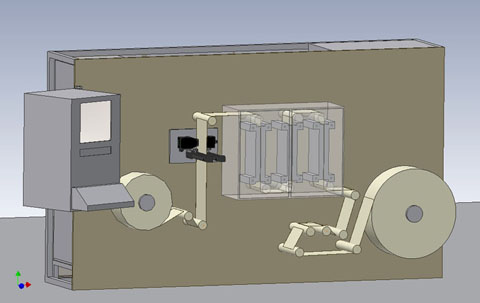



High power laser multiplexer for industry applications as well for wide
web high speed micro perforation machines LPM-1 with tipping, packaging paper,
non-woven, spun bonded, textile, plastic films or other material substrates
Patent grant DE102004001327
Patent download http://www.microperforation.com/englishengineerreport.html
Patent DE102004001327
IPM’s wide web laser perforation technology
LPM-1
IPM owns development of LASER
PERFORATION technology LPM-1 is patent grant by DE102004001327 and operates
with quadruple beam inputs up to 8 Kilowatt to a high power Co2 laser beam
multiplexer to generate up to 200 individual laser perforation rows across the
web, combines automatic positioned laser perforation heads, focus setting, web
speeds up to 400 m/min, web widths up to 2,000mm, up to 2,000,000 holes per
second, jumbo-roll-by-roll production, optical online permeability/perforation
line positioning control, porosity feedback, high automation grad and other
features. Each laser perforation lines are archive able from 100 up to 1,000
C.U.


Base conception of dual laser beam
multiplexer and other industry applications
The conception of
high power laser beam multiplexers enable many possibilities in other industry
application fields as cutting, cut-offs, welding, surface finishing, drilling,
polishing, forming, surface treatment, roughness improvement, etc.
Each of the 200
single perforation head can be positioned across the running web or static
positioned material. The automatic processes, equipments and devises
opening completely new possibilities in industry, science, military or space
laser application.
Highly automated
motor/robotic adjustable/driven focusing optics for/one each perforation head
allow a PLC controlled and precise positioning across the web/sheet
material. The procedure looks like as full automatic controlled knife
setting system on a slitting machine.
That
state-of-the-art automatic procedure and their devices open now fully new
industry challenges in wide web laser perforation and many other application
fields.
Hollow wave guides HCW HWG
In using of new Co2 hollow wave guide fibres, one rotary cubic element, or
two quadruple beam splitters, or high speed polygon facet wheel into the centre
of the optical high power twin multiplexer generating as industrial suited up
to 200 optical single channel outputs. Between the laser perforation section
and rewind stand is the optical online porosity scanning system OPSS-1 located
which controlled very precise each laser line position, the holes qualities,
holes quantities as well all porosity levels of the fast running material web.
LPM-1
paper perforation
A new high power Laser multiplexer
for wave lengths up to 10.6 micron allows by four main beam inputs up to 200
single beam outputs, up to 6 laser rows on one each bobbin, automatic laser
line positioning and setting, by two 4 Kilowatt Laser beam sources, web speeds
up to 400 m/min, web widths up to 2,000 mm, jumbo roll-by-roll and fully
automatic production, up to 20 bobbins in one cut which means up to 160 bobbins
without any machine stops including the optical OPSS-1 porosity scanning and
feed-back control system.



Anti piracy product design with laser
cluster - ultra high speed for Co2 laser beam control
Patent pending DE102004012081 DE102004012081
Micro laser perforation
Laser perforation in general,
possible to perforate by pulsed or enlarged and focused laser beams are holes
sizes from 60 to 200 micron at holes densities of typical 10 to 30 holes per
cm, holes sequences from 100,000 to 400,000 holes per second at maximal 16
punctured laser rows, register distribute cross material web width with
traditional systems or machines. Means for cigarette, tipping, plug wrap,
filter, packaging, pack, tear tape, plastic and other material. With porosity
levels from 100 up to 3,000 C. U., normally in web widths from 100 to 500mm at
web speeds of up to 600 m/min, depending on porosity and material consistency
in relation to its ability to perforate.
IPM’s laser cluster material treatment,
perforation technology
IPM’s laser cluster material
treatment perforation technology LPM-1 is patent grant by DE102004001327
operates with quadruple Co2 or other laser types, beam inputs up to 4 Kilowatt
to supply a high power twin level, vacuum operates multiplexer. High spins of
quad laser beams generates up to 200 individual optical output channels to
supply special made flexible hollow wave guide fiber HCW, HWG, fibre optics, to archive micro perforation rows cross
moving web or static material, combines automatic positioned laser perforation
heads, each with motor driven focus, web speeds up to 400 m/min, web widths up
to 2,000 mm, up to 2,500,000 holes per second, jumbo roll-by-roll production,
optical in-line permeability scanner control for perforation line position and
quality, porosity feedback, hi-tech automation level and other features. Each
laser micro perforation lines can archive 100 up to 1,000 C.U.


Super-high speed for Co2 laser beam control
Technologically performed of Piezo oscillators or ultra-high scan speeds up to 4,000 Hz
or 240,000 rpm with commercial air-bearing motors.
REAL galvanometer scanner
alternatives, precise laser beam deflection up to 4 Kilowatt Co2 by high
dynamic performances.
From 8 up to 15mm laser beam
aperture diameter, advantage beam quality factor M2 less than 0.9 for focus
spots down to 60 micron.
Absolute diffraction limits,
because small focused spot sizes which are proportional inversely of laser beam
input diameter.
In other words, larger laser beam
apertures will produce smaller focused spot sizes, as especially needed for
micro cluster perforation, drilling and other micro machining applications.
Spin actuator with special
optical coating, optimized outer shape, very precise rotation balance by inner
body laser ablation, hollow body with inner cavities by low mass material
condition, excellent relation of stiffness-to-weight, high hardness, adapted
total vibration free vacuum cylinder case, asymmetrically rotary reflection
cones from 40 up to 80mm base diameter, average mirror surface roughness lower
as 0.1 micron, form accuracy lower 0.01 micron, operation sequences are precise
synchronize with material speed.
Envelope curves of the selected
perforation pattern are storage and calculated by PLC control before single
holes and holes groups supervised during production processes.
Product process advantages enable
total different product indicators and milestones against other laser
perforation or material treatment processes which allows significant product
property, trademark indications, patent claims, unique company features in
micro perforation of tipping, cigarette packaging or other paper or material.
E.g. wide range of laser
perforation groups as common active ventilation zone to obtain several advances
in air stream distributions into cigarette filter, perfect perforation line
guiding around cigarette filters or other food, domestic, industry products to
assure constant porosity results.
Several pattern or wave line
design for different brands, number of holes or pattern with 10 or 20 per cm
length are constant, porosity range from 100 up to 1,000 C.U., holes sizes from
60 up to 120 micron, holes densities from 100,000 up to 500,000 holes per
second in total.
From 1 up 6 perforation pattern,
lines, marks or scripts can combines a group, perforation hole, pattern quality
or porosity remains in standard levels.
Other web material, substrate or
products are treatable in similar processes, existent laser perforation,
treatment machines are able to modify with new optical, micro mechanical and
control elements.
Low investment and finance budget
of technical modifications because exchanges of certain elements, complete
devices are adaptable on existent off-line perforation machines or other laser
treatment handling systems.
Capability to adapt beam divert
devices or units at on-line perforation system at cigarette making machines up
12,000cpm.

Outstanding product applications
For web or sheet material, metal,
isolation, foil, film, plastic, substrate, leather, textile and paper enables
now large number of possibilities for micro hole position, different pattern,
design, wave, zigzag, cryptograms, scripts, marking, scribing, scratching, tear
off lines or others which generates. E.g. optimize air distribution
characteristics into cigarette filters, unique anti counterfeit piracy
indication and not countable product advantages.
Special remark creates
fundamentally new product properties, e.g. as final products for mouthpieces
with tipping paper at cigarettes or other tobacco, packaging, security
products, flip off or hinge-lid packs.
Specific indication of brand
names to recognizable for everyone and even for product buyers, if micro
design, holes, patterns, holograms are to see with magnified views only.
Or sensitive touch able as
Braille scripts generated by micro cluster cryptograms or holograms.
MLL-1 targets many existent and
new applications with high speed scans of laser beam divert in horizontal or
vertical position.
Sophisticated ultra high speed
spins optical divert elements allows low budget modifications at existent
systems and production machines.
Micro-Laser-Line technology means
real alternative for high speed galvanometer scanner to archive micro cluster
perforation, pattern design, waves, zigzag, packages line, cryptogram, company
logo, hologram, anti counterfeit piracy contours for security paper, safety,
bank notes, cards, metal sticker, printing, laminating, coating, fruit, food,
bread, vegetable, agriculture covering, transparent films, plastic sheets,
holographic paper, cigarette, tipping, filter, aluminum foil, shrinkable film,
tear tapes, label, cardboard, matrix, marking, scribing, automotive, pharmacy,
smoking, chemical or medical products, electronics part, chips, indicators,
writing contours or profiles, embossing or holographic. The patent of devise,
process and product properties are pending as DE102004012081.

Other industry fields
The conception of
high power twin level laser beam multiplexer enables plenty options in other
industry application fields as cutting, cut-off, welding, surface finishing,
drilling, ablation, cleaning, micromachining, polishing, forming, melting,
surface treatment, roughness improvement. Each of 200 single laser beam and
coupled flexible hollow fiber wave guides HWG HCW up to 3,000 mm length allows
treatment processes or perforation heads for precise, compact, robotic
positioning in X/Y direction of running web or static placed sheet
material.
Automatic PLC
controlled processes, equipments and devices enables now outstanding
possibilities in industry, metal, plastic, domestic, tobacco product, medical,
hygienic, wall covering, security cards, bank notes or food application.
LPM-1 means cluster
material treatment at wide web, large area, surface or whole material
treatment, high power twin or quad rotation laser beam splitter, mirror into a
vacuum twin level multiplexer, Co2, YAG, Fiber, Excimer,
UV laser with multiple optical inputs, flexible hollow fiber, HCW, HWG up to
200 output channels. Material treatment and robotic handling for stainless
steel, ceramic, aluminum, wafer, glass, ceramic, brass, copper, wafer, silicon,
plastic sheets, titanium, jewelry, silicon, solar, panel, photovoltaic,
micromachining, slitting, rewinding, refining, hybrid laser cutting machines or
stand along systems.
Ultra high-speed rotate octagonal beam
splitter


IGBT dual power, medium frequency, high
voltage switching converter
Patent grant DE10328937
DE10328937
Introduction
On a high level operate
engineering company develops a dual, high power, high frequency switching unit
which works with hybrid drives, compact EMI safe semiconductor stages,
supporting capacitors, high voltage ferrite transformers to generate HV short
pulses and sparking groups. Advantages are based on uses of standard circuits
with extended semiconductors for e.g. nano, sub or
micro perforation applications, corona treatments etc.
Working principle
Industry application of
electrostatic perforation for fast running paper webs using IGBT, MOSFET or
HVFET semiconductor power stages. These circuits working as upward converters
with power pulses in ranges from 5 up to 25 micron second and high current
peaks up to 300 Amps on a serial connected inductivity and loading capacity
that the secondary ferrite transformer coils supply sparking electrodes up to
50 Kilovolt.
The circuit works itself with
alternating clock frequencies and changes of pulse widths a common load
condenser and coupled primary inductance of a ferrite high voltage transformer
as upward power/pulse converter and non resonance frequency operation.
A safety circuit logic and two
hybrid drivers allows a alternately switching of semiconductor A and B which
generating higher operation frequencies and power levels meanwhile the
electrical and thermal conditions remains on each in the same range as a single
switching unit.






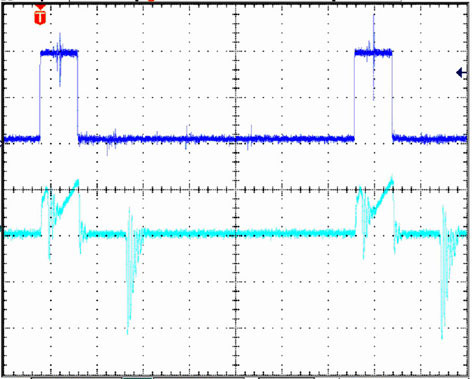
Switching advantages
A control pulse timing into a certain time window with a constant or variable
frequency generating hole sizes and hole sequences with high voltage sparking
through the material webs by nano or micro
perforation. The repeating frequencies of the entire circuit can up to the
double switching frequency as of each semiconductor stage.
A changeable current in the spark
channel are feasible with total switching frequencies up to 150 kHz. And in the
same time the dual semiconductor switching unit allows a double power level as
just only with one switching element is possible.
Dual IGBT, BJT, HVFET or MOSFET
semiconductors in high power, high current, high voltage circuits obtain in
electrostatic sub micro perforation, corona treatment or other switching
application frequencies up to 250 KHz, power level up to 30 Kilowatt and more. Higher power efficiencies and harder switching periods are further
advantages.
In conclusion the approximately
double frequency and power level operation obtains higher switching
efficiencies, much more perforation power or higher corona treatment levels
which are depend of the industry application.



Application
fields
Electrostatic perforation
processes and machines, corona treatment, surface treatment, high power
switching devices, power supplies, AC&DC and other switching converter
systems, drives, etc.
Fine paper, cigarette,
packaging or other fine paper industries, corona system manufacture, switching
device manufacture, high-power converter equipment, AC/DC, DC/AC industry etc.
The new dual
semiconductor circuit design allows applications to build hybrid drives,
semiconductor high-level stage, upward, downward or other converters or
generators which operating with supporting capacitors, high-voltage ferrite
transformers in an extremely compact and modular design. Several advantages are
the high efficiency of pulse/power transmission and energy ratios.
Traditional corona or
other type of medium generators up to 30 KHz operation ranges are easy to
modify to a double frequency and power levels operation.
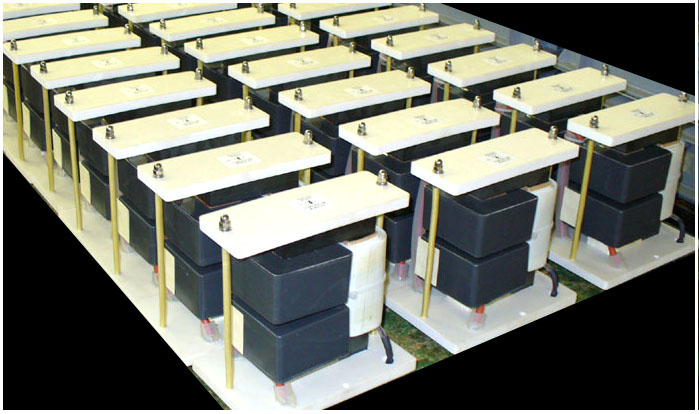




In-situ dyne surface tension wettability measurement at fast moving plastic films, foils
or other substrates
patent download http://www.microperforation.com/englishengineerreport.html
Patent application DE19543289
Dynes control
Described is a method and device for optical inline tough less surface
tension control ODSTM-1 by which the fast moving substrate runs through the
measuring gap. It’s transmitted with a chromatic beam and spectral selected
light source were two optical channels are displaced and polarized by 90 degree
to each other. Both optical axles are precise and motor driven shift able in
certain angles from 25 up to 65 degree. The spectral light photons,
transmission, extinction, absorption grades are detectable by two optical CCD
imagine vision devices which are integrate in the sensor case on the other side
of the substrate.
Material
Moving substrates means plastic
foils, flexible, high-tech films, laminate, coating, bonding, labeling,
co-extrusion, BOPP, LDPE, LLDPE, HDPE, MDPE, MAS, MEV, PET, FEP, PP, PE, PS,
PO, EVA, PTFE, PVC, PTFE, DPC, BOPS, Vinyl, Polyester, Wrapping, Olefin,
self-adhesive tape, high strength, cross-laminated, adhesive-coated films,
reflective or magnetic sheeting, automotive tape products, inkjet media, Polythylenex, heat sealing, sewing of plastic film,
pressure sensitive tapes for the entertainment industry, graphic and specialty
arts for general industrial and electrical applications, building or
engineering industry, photographs, masking or printable plastic films, flat or
corrugated rigid foamed thermoplastic sheets, polycarbonate, acrylic, PETG.
Extruded or polished cellulose,
optical grade polycarbonate, sheets for IR or laser protection, welding filter
grade sheets, films for video, imaging, capacitor or thermo transfer
applications, foamed polypropylene film with decorative ribbons,
binary-oriented polystyrene sheets, multi layer co-extruded film, high impact
PVC and PETG, polyimide film, tape and flat films for aerospace automotive
medical agriculture marine automotive household commercial domestic
construction industry, municipal and leisure applications, clear matt semi-matt
finishes or colored, micro-porous membranes for use in alkaline lithium
batteries, fuel cells and filtration equipment. By gauges from 10 to 100 micron
fabric width up to 10,000mm and web speeds up to 18 meters per second.
Optical properties
Material specific wavelength
selection between 1,200 up to 1,800 nm, material specific finger prints,
molecular spectral properties, transmission grades, optical angle scanning,
Lambert Beersche law determining, ultra low level
stray scatter light detection, polarization, slot diaphragms, transverse
displacements control the light beams along/far from the optical X and Y axes.
The results are extreme scattering, diffraction, NIR, IR, stray light photons
generation into the layer areas at both sides of the moving substrate.
Their reflected and transmitted
light intensities enables the determination by defined formulas and data
matrixes the surface tension values in ranges from 28 up to 62 mN/m which are direct associate and bond to real static
values for Statistical Quality Control (SQC).
And this entirely independent of
the material specific influences as like surface consistency, thickness,
density, weight, opacity, coherence, filling, stretching, shrinkage, structure,
co-extrusion, polar grouping, temperature, intrinsic motivation or viscosity,
hydrophobia, hydrophilic molecules, hydrogen, photonics, mol mass, moisture,
water steam proof, bi-layer, polymer, patterning, nanostructure, irradiation,
isotopic, catalyst, multi atomic, coherence, absorption, photo mask effect,
roentgen, X-ray, radiation, resonance bands, REM, TEM, FIC, IEC, ESCA electron
spectroscopy for chemical analysis ASTM or ATR method, property, ellipsometry, opto-acoustic
photonic liquid effects, pre material treatment as corona, plasma, flam
treatment.
Specific
information by website links and patent resources.
The former patent application
DE19542289 A1 concerns a method and device for optical dynamic, i.e. a
non-contact, inline surface-tension / surface-energy measurement for running
substrates whereby the detection can be in the transverse-direction or in the
running-direction of the web.
In the context of this invention, running substrates or moved web material is
to be especially understood as being plastic films like PE, PP, LDPE, HDPE,
LLDPE, BOPP, EVOH, PTFE, PET, PS, PMMA, PBMA, PVC, PA and also laminated or
coated film or paper webs which still show a measurable optical transmission in
the wavelength range of 1,200 to 2,200 nm.
A higher material wetting
capacity, respectively, a higher material adhesion capacity, which can be
achieved by increasing the surface tension, is demanded in many application
cases for better printability, coatability or
adherence capacity during the manufacture, finishing, printing and processing
of running substrate webs.
Described is a method and device
for optical dynamic in-line surface-tension measurement in ranges from 30 dynes
up to 60 dynes in which a substrate web running vertically through a measuring
gap is subjected to a chromatic light transmission from two optical channels
displaced by 90° to each other. This light transmission is detectable by two
optical detection systems located on the other side of the web.
Material specific wavelength selection, light transmission angle changes,
polarisation slot diaphragms and transverse displacements of the light beam
feeder along the optical X-axis result in extreme scattering and diffraction of
the IR light photons in the boundary layer area on both sides of the sub-nano layer within the substrate web. Their transmitted
light intensity enables, after detection and evaluation, the determination of a
direct relationship to the absolute surface tension.
And this entirely independent of the material-specific influences like:
material and surface consistency, crystallinity,
thickness, density, structure, polar grouping, temperature and type of
pre-treatment.
Introduction
Non-contact, real time and in-line operation
surface-tension or surface-energy dyne - measuring systems for running webs as
like plastic films in general, coatings, laminates etc. does not exist
world-wide. Due to the broad application field of surface-treated or
surface-non-treated webs of plastic film, non-woven fabric, laminates or coated
paper, there is unimaginable market potential here in respect of the in-line
process measuring of the surface tension - dynes - and an in-line control of
the dynes treatment level and moderate quality control.
Various companies from
the abroad are serious interested in project cooperation, system development,
prototype making and testing, manufacturing and world-wide sales, system
purchasing and licensing in respect of the ODSTM-1 Process Measuring System.
Actual projects situation of the ODSTM-1
development project
Further information concerning publications, patents and engineering
reports are specified in the above mentioned applications. Several spectral
measurements as well the feasibility study with well known optical institutes
are positive done. Furthermore some significant modifications and breakthrough
of the base ODSTM-1 measuring process with the using of state-of-the-art
monolithic spectrometers and PC support. Specific information about the actual
development and project status of the ODSTM-1 system on request.
Concerning actual ODSTM-1 development and
project status – after certain developments
- with known optical institute are large numbers of
specific measurements with a monolithic spectrometer in a wave range
between 1,200 – 1,600 nm positive done
- all measurements where based on the detection
principle which is described in the former patent application.
- used are non-treated LDPE films in 70 and 90
micron thicknesses and 28 mN/m
- the comparison is used the same LDPE films with
one side corona treated with 38, 48, 52 and 60 mN/m
- their test results where positive with a good
prospect to going further in that way
Base data of Opto
Dynamic Surface-Tension Measuring system ODSTM-1
· web widths : up to 6,000 mm
· web speeds : up to 600 m/min
· substrates : PE, PP, HDPE, LDPE, PET, EVA, BOPP, etc.
· surface-tension measuring range : 30 - 55 mNm
· resolution, respectively, reproduction : +/- 0.5 mNm
· single-sided or double-sided measurement of the treated or untreated sides of
the film
· IR wavelength range : 1,200 nm - 1,800 nm
· mode of operation : dual scattered-light/multiple-sensor system with variable
wavelengths in transmission mode
· measuring method : similar to ellipsometry
· measuring gap : approx. 5 up to 20 mm
· stationary and/or web-traversing measuring head
· optical fibre waveguide feed to measuring head
system
· spatially remote, highly-stable IR light source with beam processing
· wavelength variation via a monolithic optical converter
· industrial PC, multiple-processor system, data recording, data analysis,
product documentation, statistics, etc.
· actual-value output : analogue 0 - 10 Volt via optical fibre
or serial RS232, RS485, Ethernet, USB, etc.
CONCLUSION
Described is a method and device for opto dynamic inline surface tension measurement in which a
substrate web running vertically through a measuring gap is subjected to a
chromatic light transmission from two opto channels
displaced by 90° to each other. This light transmission is detectable by two
optical detection systems located on the other side of the web.
Material-specific wavelength selection, light transmission angle changes,
polarization slot diaphragms and transverse displacements of the light beam
feeder along the optical X-axis result in extreme scattering and diffraction of
the IR light photons in the boundary layer area on both sides of the sub-nano layer within the substrate web. Their transmitted
light intensity enables, after detection and evaluation, the determination of a
direct relationship to the absolute surface tension. And this entirely
independent of the material-specific influences like: material and surface
consistency, crystallinity, thickness, density,
structure, polar grouping, temperature and type of pre-treatment.
test results

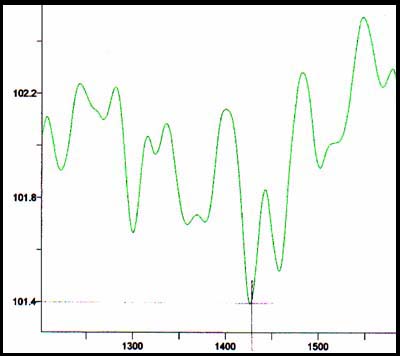
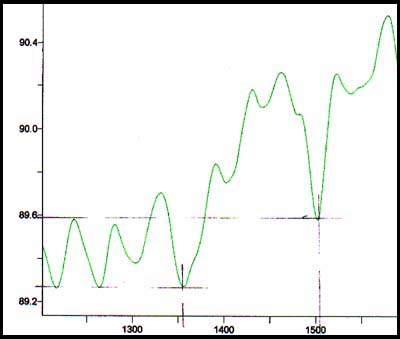
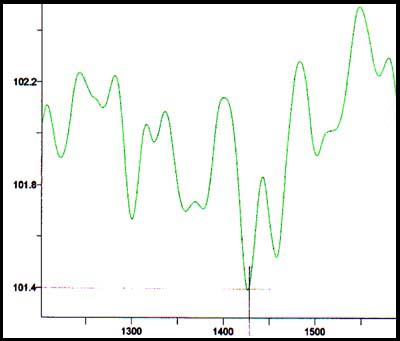


Patent links
- http://www.microperforation.com/mll-1-laser-perforation.html
- http://www.microperforation.com/lpm-1.html
- http://www.microperforation.com/opss-1-optical-online-porosity.html
- http://www.microperforation.com/igbt-esp-unit.html
- http://www.microperforation.com/online-perforation-cigarette.html
For more
information - please visit our website or request further details